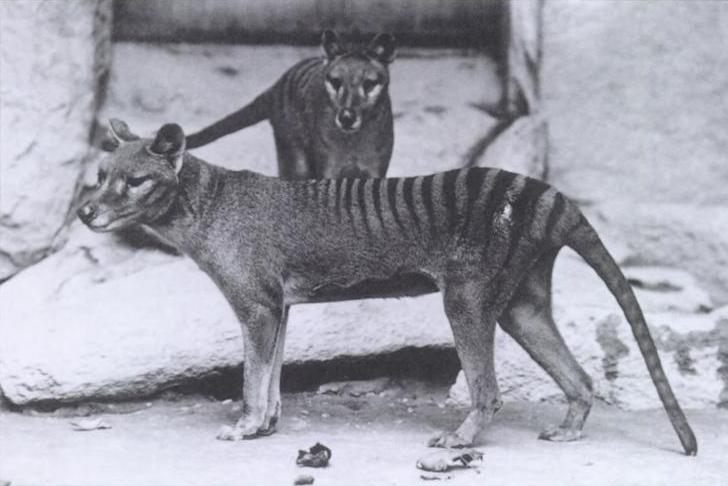Why Did the Tasmanian Tiger Disappear From Mainland Australia 3,000 Years Ago?
Climate may have played a bigger role than previously thought.

When European settlers arrived in Tasmania at the end of the 18th century, they dubbed the strange, dog-like marsupial they encountered the Tasmanian tiger. But the Tasmanian tiger, also known as the thylacine, wasn’t always exclusive to the island off Australia’s southeastern coast. The thylacine lived all across the mainland until about 3,200 years ago, when it suddenly went extinct there. The cause of this disappearance is a mystery (perhaps much like the question of whether they’re still out there). A new study based on DNA analysis suggests that an abrupt change in climate played a big role.
The commonly accepted explanation of the thylacine’s mainland extinction has involved three factors: humans, dingoes, and climate. It’s been suspected that climate played a minor role, and that dingoes, introduced to Australia around 5,000 years ago, and the growing population of increasingly sophisticated humans outcompeted thylacines as predators. The Tasmanian population, separated from the mainland about 14,000 years ago, survived until 1936, when the last known indidivual died in a Hobart zoo.
But mitochondrial DNA from 51 thylacine specimens from Australia and Tasmania suggests that an El Niño-Southern Oscillation event contributed to the mainland extinction. The early populations in Australia were genetically diverse, but the weather pattern triggered a series of prolonged droughts that were especially tough on the ones that were living in arid Western Australia. This contributed to their extinction, as well as that of the mainland population of Tasmanian devils. Conditions were a bit better in Tasmania—the thylacines there dropped in number, but started to bounce back about 700 years ago—just in time for the arrival of Europeans.
























Follow us on Twitter to get the latest on the world's hidden wonders.
Like us on Facebook to get the latest on the world's hidden wonders.
Follow us on Twitter Like us on Facebook